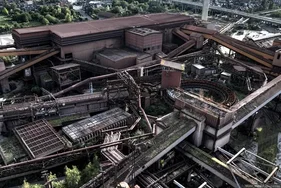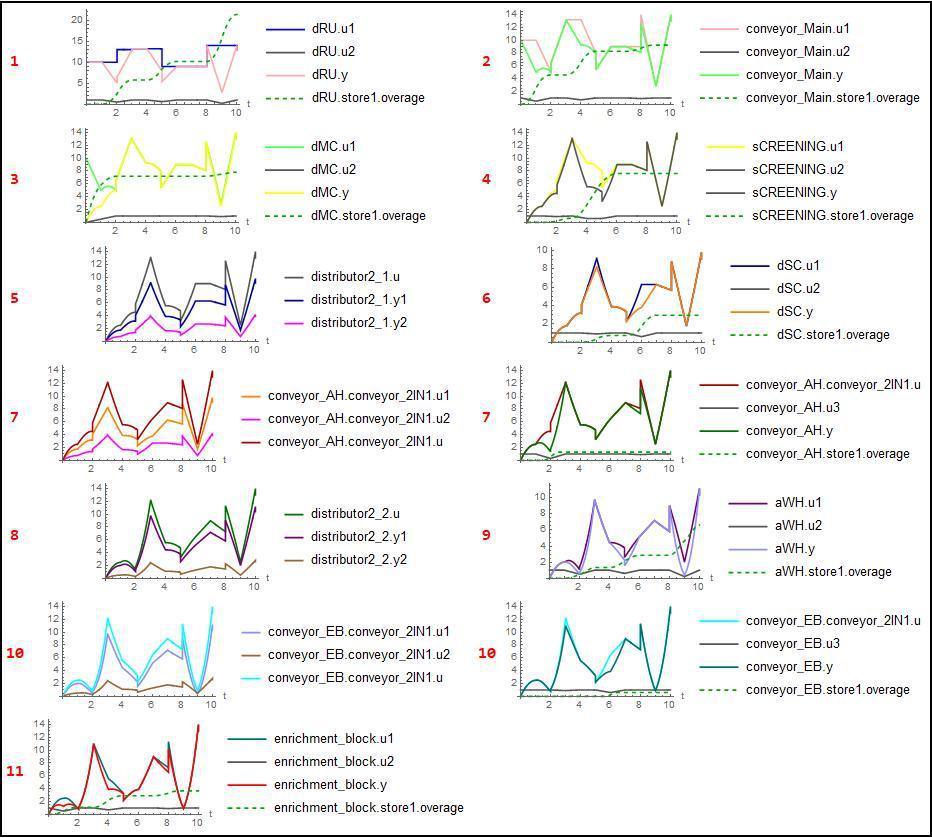
Previously, when automation was started, goals and deadlines for completing automation work were set. For some time now, automation has had neither beginning nor end.
Of course, Industry 4.0 is a marketing campaign at a time when the purchase of software began to significantly decrease and dissatisfaction with the price of licenses and support increased.
It is also true that the correct composition of sensors allows you to make informed decisions.
The fundamental question: what comes first - the tasks being solved or the data?
The following discusses an approach to leverage the potential of Industry 4.0 and avoid excessive costs.
In addition, the goal of the proposed approach is not to fall into the ERP trap: we will create a “single source of truth” that will solve most business problems.
1. Model of the GOK for 50 people * hours.
Below is a simulation model of Kovdorsky GOK, made on the basis of its basic structural diagram. The model was made in 40-50 man * hours (week). It allows you to get a general production picture, as well as to draw up a list of urgent tasks and the data necessary for them.
Compare the price of an alternative: survey, project, new sensor management system (vendor policy) - another to what the company already has. Plus the implementation, linking and coordination of all existing business processes.
An enrichment plant of a mining and processing enterprise (GOK) can be represented as a system of series and parallel connected modules (nodes) with varying characteristics of throughput and indicator values depending on the operating mode.
Mineral processing plant diagram:

Input data come from different locations and correspond to historical or projected time series.
The following are the simulation results for various circumstances.
The results consistently correspond to the stages (red number on the graphs):
- crushing and transfer unit;
- main conveyor;
- medium crushing;
- screens;
- separation of ore after screening into two streams: into small crushers and onto a conveyor for a blending warehouse;
- small crushers;
- conveyor to the blending warehouse;
- separation of ore into two streams: to the blending warehouse and to the conveyor to the enrichment building;
- blending warehouse;
- conveyor to the enrichment building;
- enrichment building;
The color of the final output of one stage corresponds to the color of the input of the next stage.
Dotted lines indicate downtime.
Blue is the original ore input. Red is the final output.
Let's consider some modes of operation of the GOK.
1. The supply of ore is constant, but with a periodic decrease in volume.

Above is a summary, below is a breakdown by area.

2. Interruptions in the operation of the crushing and transfer unit with a constant supply of ore.

Above - summary, below - detailing.

Other modes can be simulated. The tables included in the nodes in the original GOK diagram represent the interface for asynchronous use of historical or forecast data.
So far, the model is more focused on predicting and solving repair problems.
It lacks economics and economic challenges.
The following problem can be suggested.
It is necessary to provide a certain volume of ore of a certain quality by a certain date, which is stipulated by the contract, the formation of the shipment or other factors.
First, you need to ensure the required quality.
Secondly, the size of the incoming ore must be considered.
How can you manage this? Conveyor capacity and ore paths.
The higher the speed, the more energy consumption and equipment wear and tear.
Traffic management requires more organization and data.
So, we get an economic problem under existing production and commercial constraints.
The increase in productivity leads to a waste of additional resources: energy and costs for maintenance and repair. On the other side, income and / or penalties from delays and unsatisfactory quality.
With an explicitly set task, it becomes clear which sensors and where to install.
This approach will enable the company's control system division to carry out modernization in accordance with Industry 4.0 standards on its own.